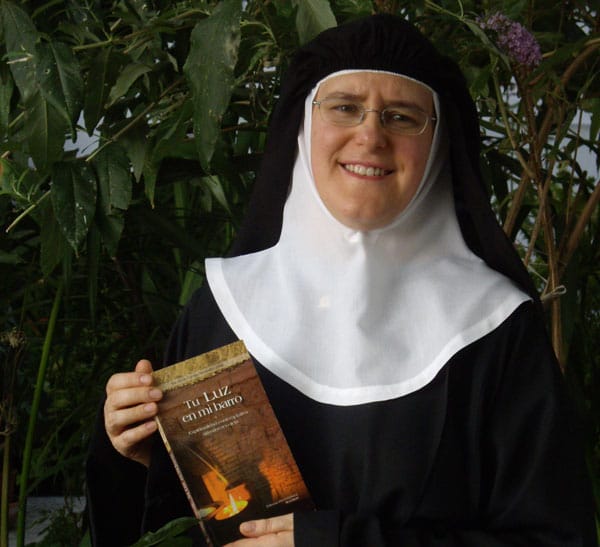Sister Alicia’s work arises from a collection of meditations written in the course of several years in the light of the Blessed Sacrament which, as she puts it in the introduction of her first book: “form a branch of violets that want to offer their fresh and delicate fragrance”. Moreover, they make up the weft and woof of living a particular charism in the Church, the contemplative charism, in the style of Saint Augustine and the Recollection, and speak with simplicity, certainty and profundity of the joy produced by the paradox of experiencing the presence of God in the little things of each moment or circumstance.
More than sweets
Q: What moves a cloistered nun to write books?
A: Precisely, what I want to show in my books is a vision of contemplative life totally different from what people are used to. Nuns do not only spend time cooking sweets. They can also give witness to a fruitful life, and to do it by publishing a book on spirituality. In my case, I want to place at the reader’s disposal something I have received gratuitously: a holistic vision of the world, of mankind and of things.
Q: What do you wish to accomplish through your books?
A: It is not my wish to make a theological discourse in my works, but I write from my experience of prayer, from what I undeservedly receive each day while living my own contemplative vocation. I am well aware that what I have received is not only for myself, but for everyone who wishes to read them. I want to share the spiritual goods with which God has showered me in my poverty.
Books published by Alicia Correa
 Books published by Alicia Correa Q: Your second book is entitled “On a Pilgrimage towards Love”: what is the message?
Books published by Alicia Correa Q: Your second book is entitled “On a Pilgrimage towards Love”: what is the message?
A: I present life as a pilgrimage. We are all pilgrims one way or the other and our goal is Love with capital letters, God. In the book I portray “soul-scapes” through which all of us pass in daily life. I describe them largely basing myself on natural phenomena. God shows himself in the grandeur of creation, in a beautiful landscape, in the sea which I love so much, and also in the simplicity of a flower or in the smallness of a drop of water. I address myself to contemplative readers who are searching for an oasis of silence where to abide as they see and contemplate God. The text is accompanied by simple but eloquent illustrations that express a different way of praying. I have wanted the drawings to speak for themselves, confirming what the text describes.
The saint of the heart
Q: In the present book as well as in your first, Your Light on My Mud, Saint Augustine is heavily present and is cited in several places.
A: When I entered the monastery, Saint Augustine was a total stranger to me. Through the years I delved deeper into his person and works, and it dawned on me that, far from being someone belonging to the past, he is a father who continues to live in his sons. What attracts me most about him is that he was a human saint, the saint of the heart, and it is from the heart that a person is known.
Free behind bars
Q: What posts do you occupy in the community?
A: I have been in the monastery for 21 years, completely happy for having been chosen by God to leave everything and to enclose myself within bars and walls where I can fully live the vocation given to me. At present I serve in the community as prioress, which means I am the coordinator and principally responsible for the march of the community.
Q: How can one be happy inside the walls and bars of the cloister?
A: Certainly, our life is subject to strict discipline. It unfolds by the ringing of the bell, which is what marks the rhythm of the day consecrated to God. But in the monastery we live the paradox of being free in a specific space from which we can go out only in case of need. The bars, the walls, the separation from the world are simply signs, symbols that do not isolate us; on the contrary, they are lived as an aid, in the knowledge that they are the means offered to us so we can devote ourselves more intensely to living the vocation we have received.
Simplicity and welcoming attitude
Q: Why did you enter as a cloistered nun in an Augustinian Recollect monastery?
A: I did not know the Augustinian charism; in fact, at the age of 18 I had a vocation experience at a convent of Poor Clares. But, when I met the Augustinian Recollect nuns, I was attracted to their simplicity, their welcoming attitude and friendliness. I think I chose this life because of the simplicity of the nuns and the sisterly and unconditional welcome that they gave me during my visits.
New Book
Q: Will you write a new book, a third, in the future?
A: Yes, I believe so, after some time; make that a longer time, as my second book has just seen print. I have been working on the third whenever allowed by my monastic tasks. I have even been thinking of the title. I would like to call it “Oasis of Peace”, and it would follow the same line as the previous two.


